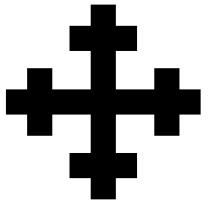LATVIAN SYMBOLS
- Nord Haus
- Jan 19, 2023
- 2 min read
Updated: Oct 29
In prehistoric times the Baltic and Finno-Ugric tribes of today's Baltic region honoured their deities of worship with both names and symbols (zīmes). These formed the foundation of Latvian folk art which in turn has formed the rich mosaic of current everyday life, where each symbol has both a meaning and role. Infinite combinations, colours and interpretations of these symbols are expressed in folk costumes, weavings, and other items of adornment, as well as on purely utilitarian objects such as ceramics, wooden spoons, and Baltic jewellery.
Here we take a look at some of the symbols which feature predominately in our products, especially our jewellery, adding traditional meaning to contemporary designs.
AUSEKLIS - MORNING STAR
This commonly occurring symbol in many Indo-European cultures still enjoys a lot of use, although its meaning has largely been forgotten.
Even in Latvia where it was used as a sign of unity during the independence struggle, the symbol has evolved and the original, basic geometric form now incorporates variations of the "Moon and Cross" symbols.
"Auseklis", the Guardian Star, shows the way through darkness and helps protect from evil and misfortune. It is used traditionally during times of war and crisis (such as the independence struggles) but also plays a part in everyday life.
JUMIS – FERTILITY
The sign of fertility and mystery of life “Jumis” symbolises two interlocked stems of the harvest. Language experts have likened “Jumis” as derived from the Sanskrit “jama” meaning twin.
Commonly grain storage structures and barns are adorned with carvings of Jumis and in ancient Latvia a festival honouring Jumis was celebrated at harvest time.
KRUSTS – CROSS

The cross is recognised as one the most ancient design elements, a reminder that the Christian version was much later adapted by lengthening the bottom spoke. In its most elementary form, the “”Fire cross “of the Goddess “Mara” becomes more meaningful when attached to other deities, offering powers to protect from all that is evil. Fire cross is commonly scored onto bread before baking to help ensure good heat in traditional coal fired ovens.
LAIMA – GOOD FORTUNE
Representing needles on a fir branch, this is the sign of the Goddess "Laima”, whose powers over fate ensure good fortune. It stands to reason that her presence is most desired at times of birth and infancy, so the cots of babies, and even the garments of the pregnant mother are often adorned with her sign. The same sort of symbol can be encountered in other cultures but to this day still retains a strong meaning for Latvians.
SAULE – SUN
As with most cultures, the rhythm and very existence of life is associated with the sun. A powerful entity which touches everything, it brings excited disproportionate attention in Latvian culture. It symbolises light and warmth. No place on earth can the Sun” symbol be observed in such a myriad of interpretations based on a singular, circular form.
AKA - SYMBOL OF WELLNESS
Aka represents the foundation of the Earth and marks the new solar year. A powerful sign to protect the home, family and the heart.
We have chosen this sign to form part of our logo for its overall wellness and to protect the things and people we love.









